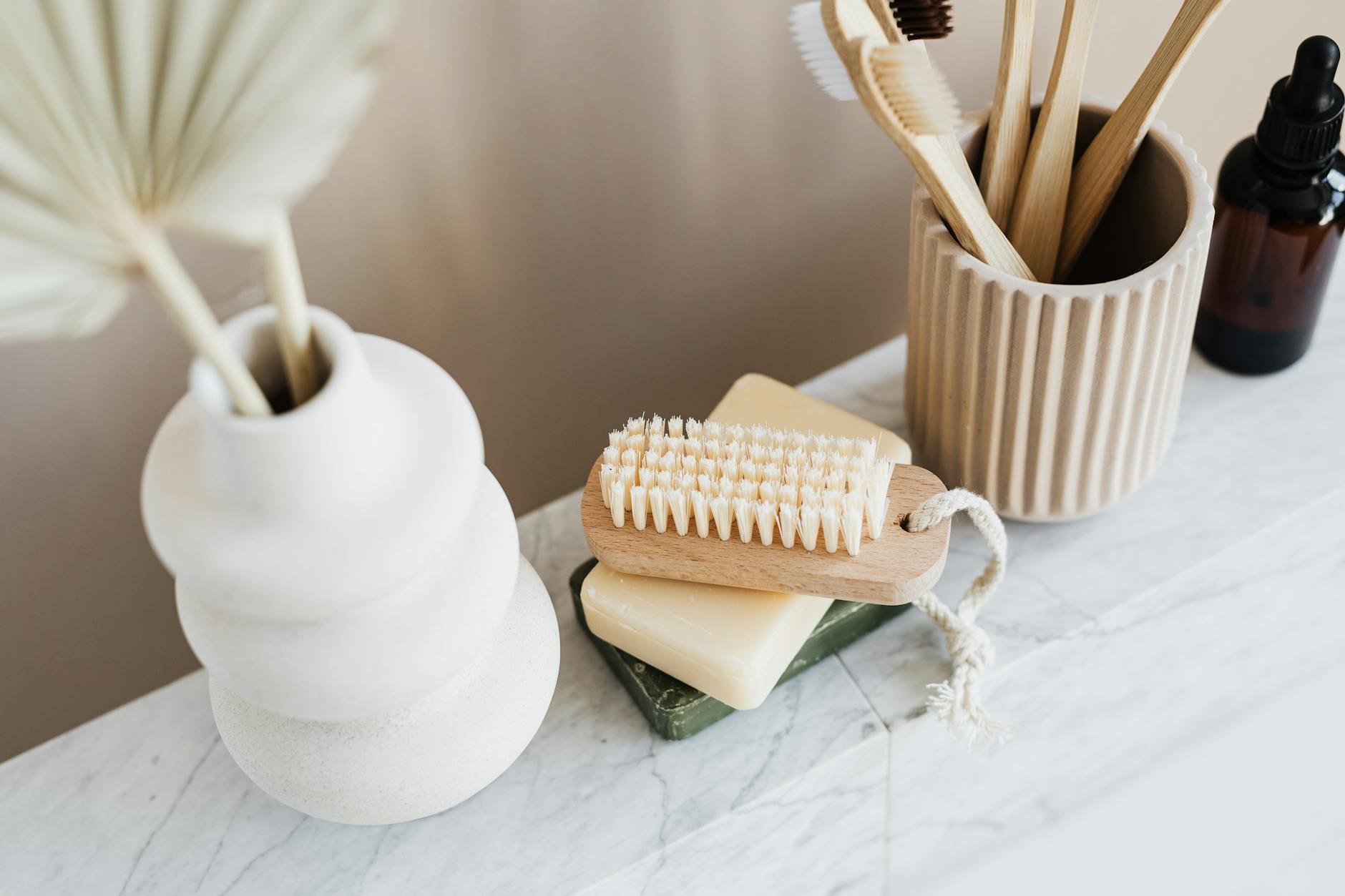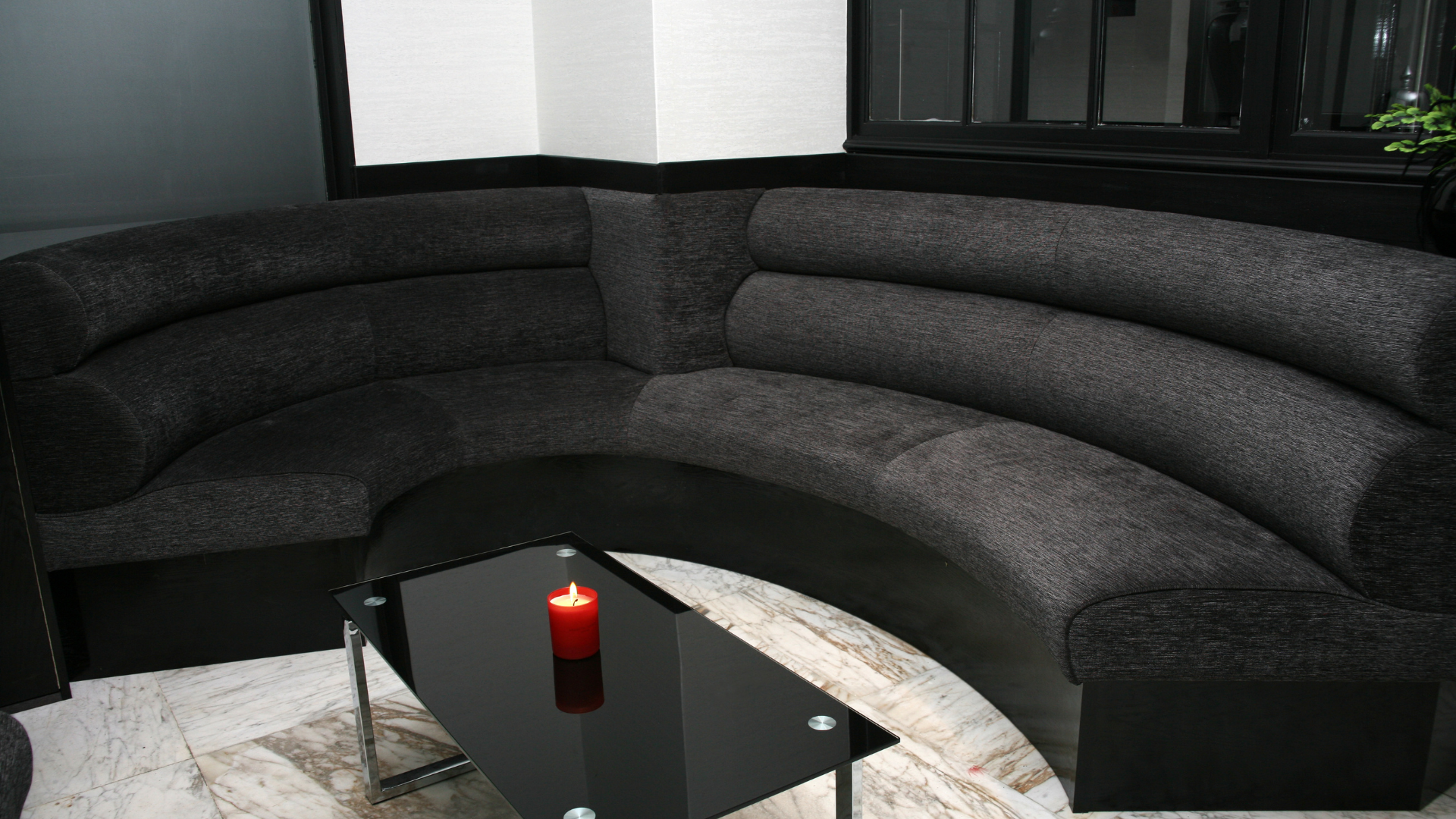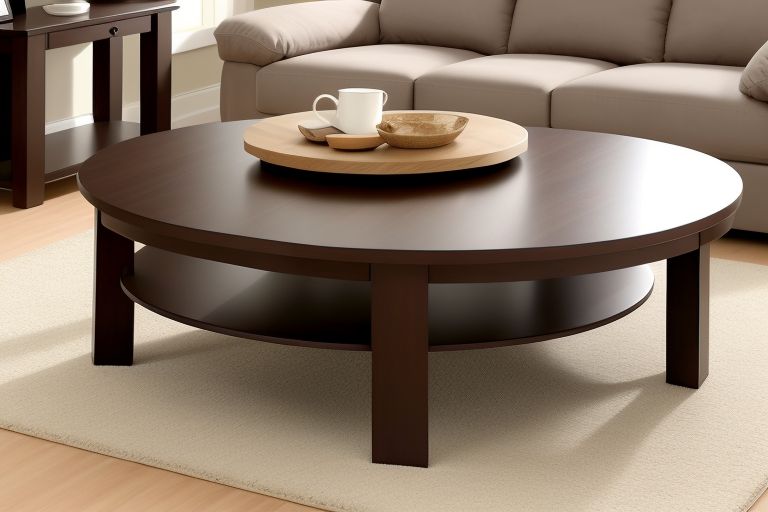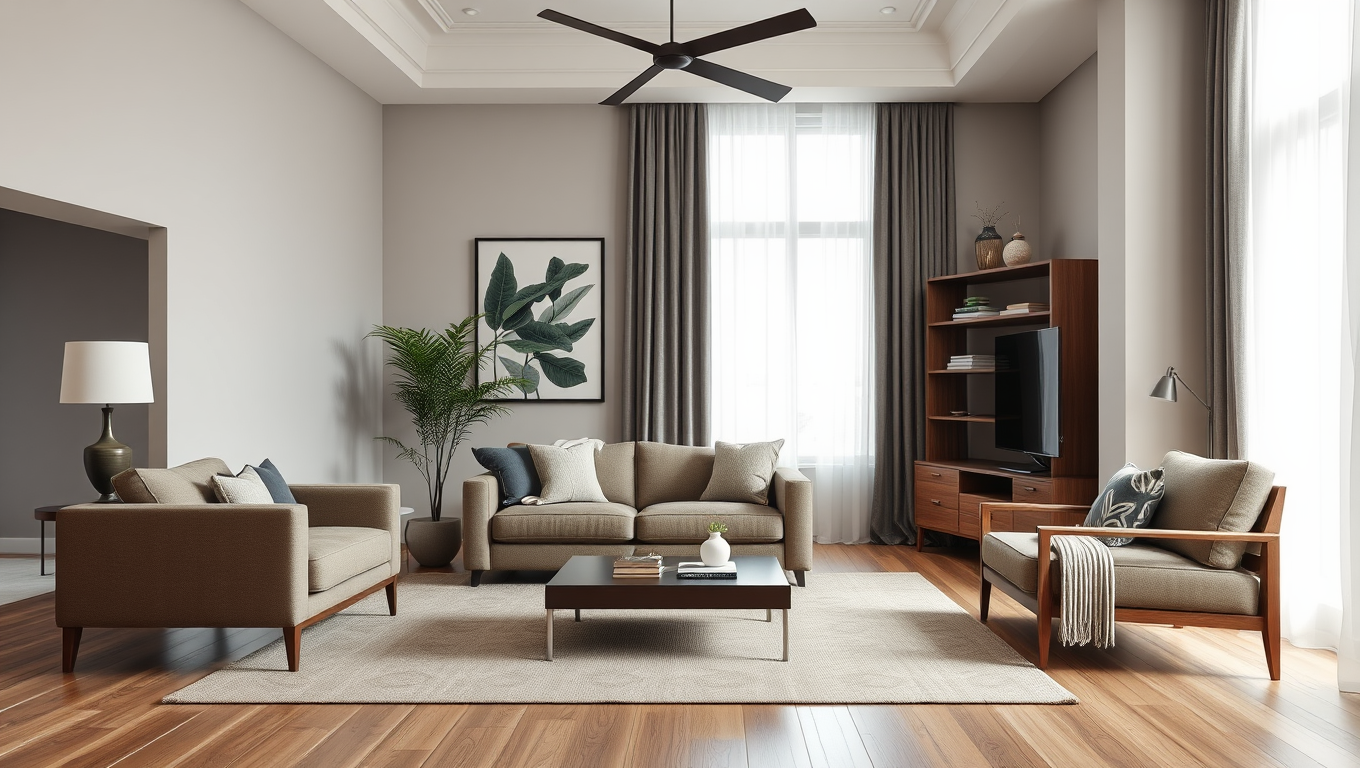This post contains affiliate links. If you make a purchase through these links, I may earn a small commission at no extra cost to you.
Creating a sustainable living room is a lifestyle choice that can dramatically improve your home’s eco-footprint and your overall well-being. Get ready to transform your living space into an environmentally conscious haven that’s both beautiful and responsible.

A. Opt for recycled or upcycled pieces
When creating your sustainable living room, recycled and upcycled furniture pieces are excellent choices. These items not only reduce waste but also add unique character to your space. You can find recycled furniture made from various materials, such as plastic bottles, reclaimed wood, or even old car parts.
Consider these options for your eco-friendly living room:
- Recycled plastic chairs
- Upcycled wooden coffee tables
- Repurposed industrial elements as shelving
B. Select sustainably sourced wood
Choosing furniture made from sustainably sourced wood is crucial for a green living room. Look for certifications like FSC (Forest Stewardship Council) or PEFC (Programme for the Endorsement of Forest Certification) when shopping for wooden furniture. These certifications ensure that the wood comes from responsibly managed forests.
| Wood Type | Sustainability Rating | Durability |
|---|---|---|
| Bamboo | High | Excellent |
| Reclaimed | High | Good |
| Oak | Medium | Excellent |
| Pine | Medium | Good |
C. Invest in durable, long-lasting items
Choosing high-quality, durable furniture is essential for a sustainable living room. By investing in pieces that will last for years, you reduce the need for frequent replacements and minimize waste. Look for furniture with:
- Solid construction
- High-quality materials
- Timeless designs
D. Consider second-hand or vintage furniture
Incorporating second-hand or vintage furniture into your living room is an excellent way to reduce your environmental impact. These pieces often have unique stories and can add character to your space. You can find vintage furniture at:
- Antique shops
- Thrift stores
- Online marketplaces
By choosing eco-friendly furniture, you’re taking a significant step towards creating a sustainable living room.

Switch to LED bulbs
LED bulbs are a game-changer for your sustainable living room. They consume up to 90% less energy than traditional incandescent bulbs and last much longer. Here’s a comparison of different bulb types:
| Bulb Type | Energy Efficiency | Lifespan (hours) | Heat Emission |
|---|---|---|---|
| LED | Highest | 25,000 – 50,000 | Lowest |
| CFL | High | 8,000 – 10,000 | Low |
| Incandescent | Low | 1,000 – 2,000 | High |
By switching to LEDs, you’ll significantly reduce your energy consumption and carbon footprint.
Maximize natural light
To create a more sustainable and inviting living room, make the most of natural light. Here are some tips:
- Arrange furniture to allow sunlight to penetrate deeper into the room
- Use mirrors strategically to reflect and amplify natural light
- Opt for light-colored walls to brighten the space
- Keep windows clean to maximize light transmission
Install smart lighting systems
Smart lighting systems offer both convenience and energy efficiency. You can control your lights remotely, set schedules, and even adjust brightness levels. Many systems also integrate with voice assistants, making it easier to manage your lighting without even touching a switch.
Use light-colored curtains or blinds
Light-colored window treatments reflect sunlight back into the room, reducing the need for artificial lighting during the day. They also help keep your living room cooler in summer, reducing the need for air conditioning. Consider using sheer fabrics that allow natural light to filter through while still providing privacy.

Select Sustainable Flooring Options
Choose bamboo or cork flooring
When it comes to sustainable flooring options for your living room, bamboo and cork are excellent choices. These materials offer both environmental benefits and aesthetic appeal. Bamboo is incredibly fast-growing, making it a highly renewable resource. Cork, on the other hand, is harvested from the bark of cork oak trees without harming the tree itself.
| Feature | Bamboo | Cork |
|---|---|---|
| Durability | High | Medium |
| Water Resistance | Good | Excellent |
| Comfort | Firm | Soft and cushiony |
| Maintenance | Easy | Moderate |
Explore reclaimed wood options
Reclaimed wood flooring adds character and history to your living room while reducing the demand for new lumber. This sustainable option gives new life to old materials, often sourced from:
- Deconstructed buildings
- Old barns
- Railway sleepers
- Wine barrels
Consider natural fiber carpets
For a softer flooring option, natural fiber carpets offer sustainability and comfort. Popular choices include:
- Sisal
- Jute
- Seagrass
- Wool
These materials are biodegradable and often require fewer chemicals in their production compared to synthetic alternatives.
Opt for low-VOC finishes
To complete your sustainable flooring, choose low-VOC (Volatile Organic Compound) finishes. These products release fewer harmful chemicals into your home, improving indoor air quality. Look for water-based polyurethane or natural oil finishes to protect your flooring while maintaining its eco-friendly status.

Use Eco-Friendly Paints and Finishes
Choose low-VOC or zero-VOC paints
When creating a sustainable living room, your choice of paint plays a crucial role in maintaining indoor air quality. Low-VOC (Volatile Organic Compounds) and zero-VOC paints are excellent options for eco-conscious homeowners. These paints emit fewer harmful chemicals, making them safer for you and the environment.
Here’s a comparison of traditional, low-VOC, and zero-VOC paints:
| Paint Type | VOC Content | Environmental Impact | Health Benefits |
|---|---|---|---|
| Traditional | High | Harmful | Limited |
| Low-VOC | < 50 g/L | Reduced | Improved air quality |
| Zero-VOC | < 5 g/L | Minimal | Best for air quality |
Explore natural clay-based paints
Natural clay-based paints offer a unique, eco-friendly alternative to conventional paints. These paints are:
- Made from natural materials
- Non-toxic and biodegradable
- Excellent for regulating humidity
- Available in a variety of earthy tones
Use milk paint for a rustic look
For a charming, rustic aesthetic in your sustainable living room, consider using milk paint. This centuries-old paint option offers several benefits:
- 100% natural ingredients
- Zero VOCs
- Durable and long-lasting
- Creates a unique, matte finish
When selecting finishes for your living room, opt for water-based or natural oil finishes to complement your eco-friendly paint choices. These finishes are less toxic and more sustainable than their chemical-based counterparts.
Add Green Elements with Plants

Incorporate air-purifying indoor plants
You can significantly improve your living room’s air quality by adding air-purifying plants. These natural air filters not only look great but also remove harmful toxins from the air. Here are five excellent air-purifying plants for your sustainable living room:
- Snake Plant (Sansevieria)
- Peace Lily (Spathiphyllum)
- Spider Plant (Chlorophytum comosum)
- Pothos (Epipremnum aureum)
- Rubber Plant (Ficus elastica)
Create a living wall
Transform your living room into a lush oasis by installing a living wall. This vertical garden not only serves as a stunning focal point but also improves air quality and adds a natural element to your space. You can use a variety of plants, including ferns, succulents, and air plants, to create a diverse and visually appealing living wall.
Use hanging planters to save space
If floor space is limited, hanging planters are an excellent solution. You can suspend them from the ceiling or mount them on walls to add greenery without sacrificing valuable square footage. Consider using macramé hangers for a bohemian touch or sleek metal planters for a modern look.
Choose low-maintenance succulents
For those with busy lifestyles, succulents are the perfect choice. These hardy plants require minimal care and come in various shapes and sizes. Here’s a comparison of some popular succulents for your living room:
| Succulent Type | Light Requirement | Watering Frequency | Growth Rate |
|---|---|---|---|
| Aloe Vera | Bright, indirect | Every 2-3 weeks | Moderate |
| Echeveria | Full sun | Every 7-10 days | Slow |
| Jade Plant | Bright, indirect | Every 2-3 weeks | Slow |
| Burro’s Tail | Bright, indirect | Every 2-3 weeks | Moderate |
By incorporating these green elements, you’ll not only enhance the aesthetic appeal of your living room but also create a healthier, more sustainable environment. Now that you’ve added some natural touches, let’s explore how to complement them with sustainable textiles.
Opt for Sustainable Textiles

Select organic cotton upholstery
When it comes to creating a sustainable living room, your choice of upholstery plays a crucial role. Organic cotton is an excellent option for eco-conscious homeowners. Unlike conventional cotton, organic cotton is grown without harmful pesticides or synthetic fertilizers, making it better for the environment and your health.
Here’s a comparison of organic cotton vs. conventional cotton upholstery:
| Feature | Organic Cotton | Conventional Cotton |
|---|---|---|
| Pesticides | None | Heavy use |
| Water usage | 71% less | High water consumption |
| Carbon footprint | Lower | Higher |
| Durability | Longer-lasting | Varies |
| Allergies | Hypoallergenic | May cause reactions |
Use hemp or linen curtains
Hemp and linen are both sustainable choices for your living room curtains. These natural fibers are biodegradable, require less water to grow, and are incredibly durable. Hemp is particularly noteworthy for its rapid growth and pest-resistant properties, while linen is known for its natural luster and cooling effect.
Choose wool or jute rugs
For flooring accents, consider wool or jute rugs. Wool is a renewable resource that’s naturally stain-resistant and long-lasting. Jute, derived from plant fibers, is biodegradable and adds a rustic charm to your space. Both options are eco-friendly alternatives to synthetic rugs.
Incorporate recycled fabric throw pillows
Add the finishing touch to your sustainable living room with throw pillows made from recycled fabrics. These pillows not only reduce waste but also bring unique textures and patterns to your decor. Look for pillows made from:
- Upcycled denim
- Repurposed burlap coffee sacks
- Recycled plastic bottles (PET fabric)
By choosing these sustainable textile options, you’re creating a living room that’s not only stylish but also kind to the environment.

Implement Water-Saving Features
Install a smart thermostat
A smart thermostat is a game-changer for your sustainable living room. By intelligently controlling your home’s temperature, you can significantly reduce energy consumption and lower your carbon footprint. These devices learn your habits and preferences, automatically adjusting the temperature to optimize comfort and efficiency. You can even control them remotely using your smartphone, ensuring your living room is always at the perfect temperature without wasting energy.
Use a ceiling fan for air circulation
Complementing your smart thermostat with a ceiling fan can further enhance your living room’s energy efficiency. Ceiling fans use far less energy than air conditioners and can make a room feel up to 4°F cooler. In winter, reverse the fan’s direction to push warm air down, reducing the workload on your heating system.
Choose energy-efficient windows
Upgrading to energy-efficient windows is a crucial step in creating a water-saving living room. These windows provide better insulation, reducing heat loss in winter and heat gain in summer. Look for double or triple-paned windows with low-E coatings and argon gas fills for maximum efficiency.
Seal air leaks around doors and windows
To maximize the benefits of your energy-efficient windows and smart thermostat, it’s essential to seal any air leaks. This simple yet effective measure can significantly reduce your energy consumption and create a more comfortable living space.
| Feature | Benefits | Energy Savings |
|---|---|---|
| Smart Thermostat | Automatic temperature control, remote access | Up to 15% on heating and cooling |
| Ceiling Fan | Improved air circulation, reduced AC usage | Up to 40% on cooling costs |
| Energy-Efficient Windows | Better insulation, reduced heat transfer | Up to 30% on heating and cooling |
| Sealed Air Leaks | Improved insulation, reduced drafts | Up to 15% on heating and cooling |
By implementing these water-saving features, you’re not only creating a more sustainable living room but also reducing your energy bills and increasing your home’s comfort. Remember, small changes can lead to significant impacts on both your wallet and the environment.

Creating a green and sustainable living room is an achievable goal that can significantly impact both your home and the environment. By choosing eco-friendly furniture, energy-efficient lighting, sustainable flooring, and non-toxic paints, you’re taking important steps towards a more environmentally conscious lifestyle. Incorporating plants, sustainable textiles, and water-saving features further enhances the eco-friendly nature of your space.
Remember, every small change you make contributes to a larger positive impact. As you implement these sustainable practices in your living room, consider extending them to other areas of your home. Your efforts not only create a healthier living environment for you and your family but also contribute to the broader goal of environmental conservation. Start your green living room transformation today and inspire others to follow suit in creating more sustainable living spaces.



